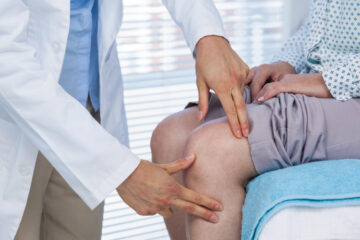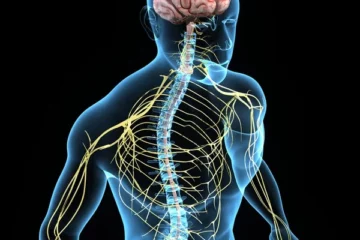Do you have a sore knee? Reasons and Remedies
Knee pain is a common occurrence to all people, irrespective of their ages. It is, however, most common among adults. It can be a result of several things, such as a torn cartilage or a ruptured ligament. It can also be brought about by some medical conditions like infections, gout, and arthritis. However, it’s primarily associated with general wear and tear from walking, running, standing, lifting, and bending. It is also experienced by athletes and people in sports that involve jumping, running, pivoting, and general activities that require putting a lot of pressure on the knees.
Brief about the knee joint
As per the University Hospitals, the knee is one of the vulnerable joints in the body. It bears stress from daily activities like lifting, lifting, running, walking, and kneeling. The knee has the following major parts:
Tibia: It’s the more prominent lower leg bone, or the shin bone.
Femur: Thighbone.
Patella: the knee cap.
The end of each bone is coated with a layer of gristle that functions as a shock absorber and provides protection for the knee. The knee joint is composed of ligaments, tendons, and muscles that hold two long bones together. There are two major muscles’ groups that support the functioning of the knee joint: The Hamstrings, found at the back of the thighs, which help to bend the leg at the knee joint and the quadriceps muscles, at the front of the thighs that help to strengthen the thighs.
Tendons connect bones to the muscles. Ligaments, on the other hand, are the bands that connect bones to bones. At the knee joint, some ligaments help to provide protection and stability in the joints, while others control the backward and forward movement of the shin bone (tibia).
Reasons for a sore knee
Sore knees can be caused by mechanical problems, injuries, some types of arthritis, or any other medical issues. Knee injuries can affect the ligaments, the fluid-filled sacs surrounding the joints, the bones, the ligaments, and the tendons. Some of the most common knee injuries include:
Bursitis
A bursa is a sac holding a small amount of fluid under the skin, above the joint. Its principal function is to prevent friction. Some injuries or overuse of the knee joint can irritate the bursae, which can lead to joint pain and swelling. This condition is referred to as bursitis.
Dislocated kneecap
The knee joint pains when the kneecap slides out of its position. It can cause unbearable pain and even swelling on the knee. Doctors refer to this as patella dislocation.
Torn meniscus
Meniscus or Menisci is tough rubber-like cartilage that acts as a shock absorber between the shinbone and the thigh bone. When you suddenly twist your knee while carrying some weight, the meniscus can get torn. A meniscus tear can vary in the degree of severity and can create a high level of discomfort even in low impact exercise if done for a longer duration, for example walking for long duration.
Fractures
Knee bones can be broken when one falls or is involved in an accident. People having osteoporosis can quickly develop a knee fracture by simply having a missed step because their bones become weak due to the constant loss of minerals like calcium.
Precautions in daily routine.
You can do several things every day to help knee pain, whether it has been caused by a recent injury or osteoarthritis that you have developed over years, a natural degenerative condition.
Avoid resting too much
Too much rest may cause your muscles to grow weak, lose tone and strength which can worsen the joint pain. Perform exercises that are safe for your knees every day. If you are not sure which activities are safe for your knees, consult a Medical Yoga expert or a Doctor before engaging in any.
Don’t risk a fall
An unstable knee of someone in pain can make them prone to falling, resulting in more knee injuries. Prevent the risk of you falling, by ensuring your home has adequate lighting, support for climbing up the stairs, support for sitting down and getting up, an appropriate ladder or bench to pick up something from the shelf etc..
Exercises
Cardio exercises have a good reputation for strengthening the muscles that support the knee and increase flexibility—making a good choice for the cardio exercise count. Some of the good ones include swimming, walking, cycling, water aerobics, and stationary cycling. Tai Chi has also been known to improve balance and reduce stiffness. We strictly prohibit the use of high impact cardio exercises, squatting, lunges etc if you have a sore knee or even slight tenderness in the knee joint.
Don’t ignore your weight
Overweight people undergo a lot of stress on their knees while doing all of their daily routine activities. Losing weight helps a lot in reducing this pressure on the knees. It doesn’t have to be a drastic loss in weight; any slight difference in weight reduction has a significant impact.
Knee Pain Treatments available
Treatment for knee pain varies depending on the causes.
Medication
Your doctor may prescribe some medication to relieve the pain and treat the condition that has caused the pain. The common type of medications are muscle relaxants, anti-inflammatory drugs, pain killers and supplements
PhysioTherapy
Making the muscles around your knee joint stronger will help it become more stable. The doctor may recommend physical therapy or other strengthening exercises based on the condition causing pain in your knee.
If you are physically active or involved in a sport, you may need to perform exercises that correct movement patterns that may cause your knee pain. It also helps to establish good technique when in the sport or the activity you perform often. Exercises that improve balance and flexibility are of significant help.
Injections
In some cases, the doctor may prescribe an injection of medicine or other substances directly to your joint.
Surgery
When you develop an injury that calls for surgery, it is not usually advisable to perform the surgery immediately. Before opting for an operation, consider all the advantages and disadvantages you are likely to experience when opting for all other treatment methods.
Read 7 things to know about knee pain management
How can Medical Yoga with Rope & Belt help with knee pain treatment?
Yoga has been known to reduce stiffness, improve strength and mobility on the knees, which is essential for executing our everyday routine. It is helpful for the joints in both young and older people who have conditions that cause chronic knee pain. It helps to improve posture and walking speed in older people.
Yoga involves low-impact exercises, that helps to increase heart rate while at the same time reducing the stress on the joints. People with knee pain can benefit so much from yoga because it helps to reduce chronic pain while improving general mobility fitness and gets you on a good healthy lifestyle.
On top of it, Medical Yoga therapy helps you to understand the exercises to be performed in knee pain situation and those to be avoided. The Rope & Belt treatment at InnerSaga, which is a part of Medical Yoga is extremely helpful in the situation of osteoarthritis of the knee joint. It is can be beneficial for arthritis upto grade 3. To know more about how Rope & Belt treatment work, read here.
If you are experiencing any soreness in your knees, this article is very informative in helping you to choose the best treatment and care for your knees and get you back to good health.



0 Comments